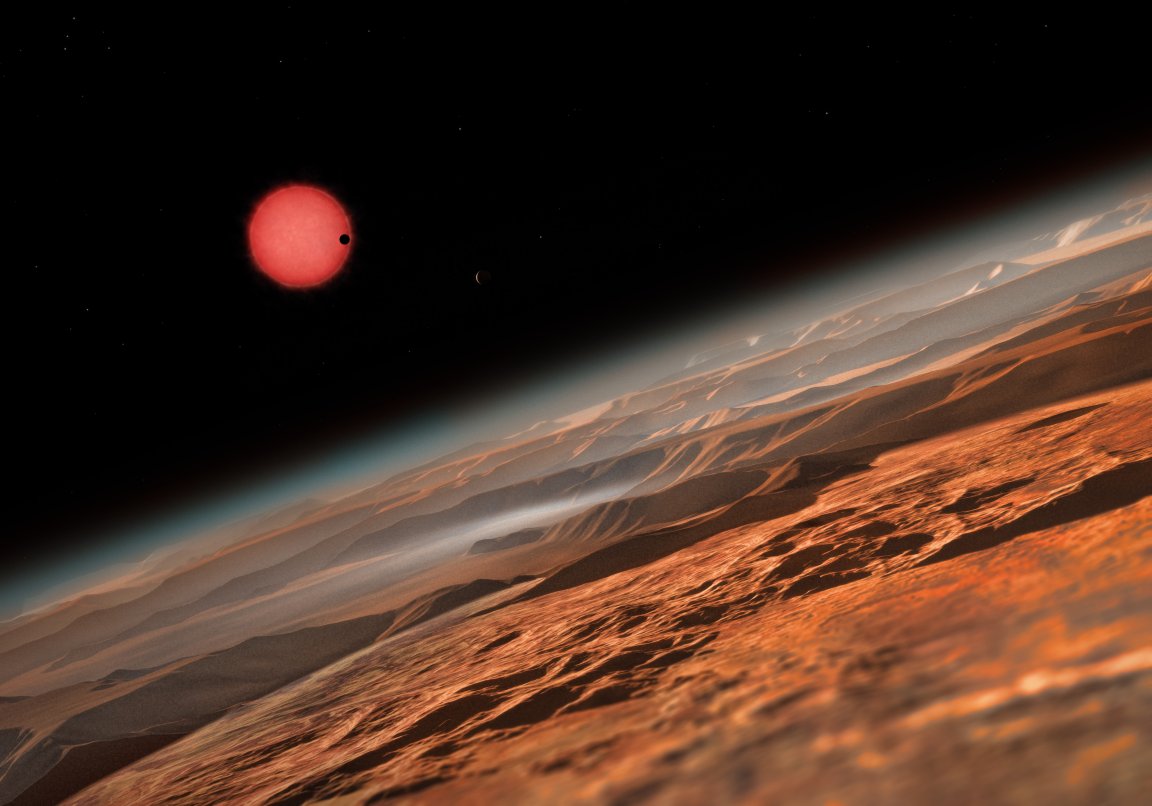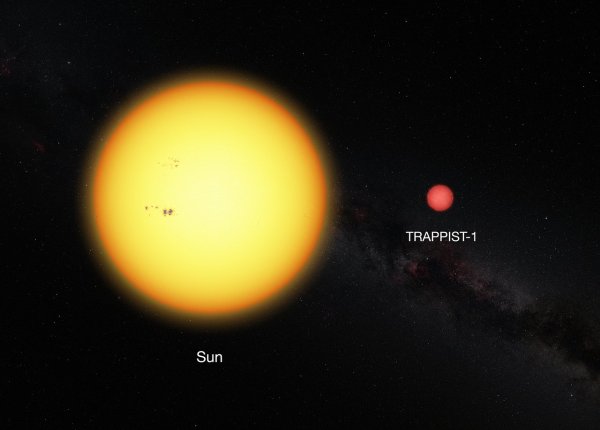
Earth 2.0 (x3)
European astronomers, using the Belgian TRAPPIST telescope, have detected the signatures of three very small worlds lurking in the periodic dimming of a nearby red dwarf star. The star itself, bearing the unwieldy designation of 2MASS J23062928-0502285 (now TRAPPIST-1), is considered to be an “ultracool” dwarf star—straddling the line between red dwarf stars and brown dwarfs, its mass is only 8% of the Sun’s, with a diameter scarcely larger than Jupiter’s.
TRAPPIST-1 lies about 40 light-years away, in the constellation Aquarius. Despite the star’s diminutive size and pitiful luminosity, the finding is important, as stars in this size range are by far the majority of the total stellar population, and their slow-burning interior engines mean they’ll live for a trillion years or more.
Which means the planets of such stars could be habitable for a similar span—greater than the age of the universe and far longer than the meager few billion years allotted our own Earth.

Searching for the Abodes of Life
“This really is a paradigm shift with regards to the planet population and the path towards finding life in the Universe. So far, the existence of such ‘red worlds’ orbiting ultracool dwarf stars was purely theoretical, but now we have not just one lonely planet around such a faint red star but a complete system of three planets!” says Emmanuël Jehin, coauthor of the paper, which appears today in the journal Nature.
Follow-up observations indicate that the planets are roughly Earth-like in size, and that the two innermost have orbital periods of 1.5 and 2.4 days, with the third having a much less well-defined period between 4.5 and 73 days.
“The structure of this planetary system is much more similar in scale to the system of Jupiter’s moons than to that of the Solar System,” observes Michaël Gillon, the study’s lead author.
The two inner planets receive about four times to twice as much radiation, respectively, as the Earth, which places them somewhat within the interior boundary of their system’s habitable zone; still, there is the possibility that atmospheric or geophysical processes may furnish them with habitable areas.
The third, outlying planet may lie fully within the habitable zone—though, until its precise orbital period is known, it’s a guess as to whether that’s the case or not.
The three planets of TRAPPIST-1 are perfect targets for further observations with more sophisticated telescopes; the dim light of the parent star will allow astronomers to study their atmospheric composition, and scan for tell-tale biomarkers. The forthcoming Extremely Large Telescope and the James Webb Space Telescope should do nicely.
Until then, we’ll just have to let our imaginations explore the three worlds of TRAPPIST-1.
